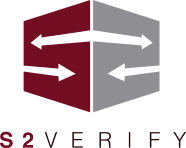13 Viral Terms Shaping Employee Experience
It’s a constant battle to keep up with the latest trends and vocabulary that seem to come out of nowhere and have anyone older than 16 scratching their heads. So much so that when a new trend pops up (demure and mindful, anyone?), everyone from celebrities to your colleagues is working to keep up.
As if that’s not enough, new research from Rippl unveils 13 trending workplace terms that offer valuable insights into the modern employee experience. These expressions, gleaned from social media trends and professional circles, shed light on emerging workplace behaviors and expectations for 2024 and beyond.
1. Acting Your Wage: The New Work-Effort Equilibrium
“Acting your wage” refers to employees putting in what they consider an appropriate amount of effort for their salary. This term reflects a growing awareness among workers about the balance between compensation and job responsibilities.
This can significantly affect employee experience and retention. When employees feel their efforts are adequately rewarded, they’re more likely to remain committed to their roles and the organization.
This trend indicates a shift in employee mindset. Workers are becoming more conscious of their worth and are calibrating their efforts accordingly. It calls for employers to ensure fair compensation and clear job expectations.
2. Monk Mode: The Quest for Deep Work
“Monk Mode” describes intense periods of uninterrupted focus, where employees shut out all external distractions to optimize productivity. This trend highlights the increasing value placed on deep, concentrated work in an age of constant digital interruptions.
This is a response to hyper-connected work environments. It’s about creating sacred spaces for focused work, which can lead to higher-quality outputs and increased job satisfaction.
“Continuous development opportunities are key to combating the busyness effect,” says Mike Klein, an internal communications specialist. “Employees who feel challenged and see a clear path for growth are more likely to remain engaged and loyal to the company,”
Organizations that support “Monk Mode” by providing distraction-free work environments or flexible schedules may improve productivity and employee well-being.
3. Performance Punishment: The Downside of Excellence
“Performance punishment” occurs when high-performing employees are overloaded with colleagues’ work due to their ability to take on more and operate above expectations. This phenomenon can lead to burnout and decreased motivation among top performers.
This is a silent talent killer. Managers must recognize and fairly distribute workloads, ensuring that high performers aren’t inadvertently penalized for their capabilities.
This issue is particularly relevant for HR professionals because addressing performance punishment is vital for maintaining a positive culture and retaining top talent. Organizations should implement systems to recognize and reward high performance without overburdening their best employees.
4. Fake Happy: The Emotional Labor of Work
“Fake Happy” describes putting on a happy face in the corporate environment while hiding exhaustion. This term highlights many employees’ emotional labor and the potential disconnect between workplace culture and genuine employee experience.
The prevalence of ‘fake happy’ in workplaces is concerning. It can lead to emotional exhaustion and decreased job satisfaction over time. Employers need to foster environments where authentic emotions are acknowledged and supported.
“Creating a culture of psychological safety where employees feel valued for their contributions is essential in combating quiet constraints,” says Priscilla Guasso, an HR leader with deep experience in talent management. “When employees are secure in their roles, they are more likely to share knowledge and collaborate effectively.”
Creating a culture of psychological safety where employees feel comfortable expressing their true feelings can improve overall employee experience and mental health.
5. Woliday: When Vacation Isn’t Really Vacation
A “woliday” refers to spending annual leave working. This trend points to the blurring lines between work and personal time, especially in the age of remote work and always-on communication.
The rise of ‘wolidays’ is a red flag for employee burnout. Organizations must respect boundaries and encourage true disconnection during time off to promote better work-life balance and prevent burnout.
This term also encompasses situations where employees make themselves available during paid time off or decide to work during company holidays. Addressing the “woliday” phenomenon is crucial for employee experience, retention, and long-term productivity. Companies should implement policies discouraging work during vacation time and promote genuine rest and recovery.
6. Interview Insanity: The Toll of Prolonged Hiring Processes
“Interview insanity” describes a long, strenuous interview process with no updates or feedback. This term reflects candidates’ frustrations with opaque and drawn-out hiring procedures.
Interview insanity can severely damage an organization’s employer brand. Candidates who experience this will likely share their negative experiences, potentially deterring other talented individuals from applying.
This issue has become so prevalent that some organizations are considering developing guidelines or implementing technology to address these issues. To mitigate “interview insanity,” companies should streamline their hiring processes, provide regular updates to candidates, and offer constructive feedback, even to those who aren’t selected.
7. Ghost Jobs: The Illusion of Growth
“Ghost jobs” are job postings for positions that don’t exist, created to make an organization appear as though it’s thriving. This practice can damage trust and employer reputation.
Ghost jobs erode trust in the job market and damage an organization’s reputation. Job seekers are becoming more savvy in identifying these practices, and the backlash can be significant.
This trend picked up in Q2 of this year, and job seekers are increasingly aware of the demoralizing possibility that the jobs they’re applying for might not be real. Companies should prioritize transparency in their hiring practices to maintain credibility and attract genuine talent.
8. Quitting Guilt: The Emotional Cost of Career Moves
“Quitting guilt” describes the guilt employees experience when leaving an unhealthy work environment and their colleagues behind. This phenomenon underscores the strong social bonds formed at work and the emotional complexity of career transitions.
Quitting guilt is a testament to the strong relationships formed at work. However, employees must prioritize their own well-being and career growth. Employers should foster a culture that celebrates individual growth, even when it means losing talent.”
While succession planning can mitigate this issue for leadership roles, it often increases workloads for remaining team members at other levels. Addressing “quitting guilt” involves creating supportive exit processes and maintaining positive relationships with former employees, which can benefit employer branding and potential future collaborations.
9. Loud Suffering: The Vocal Expression of Burnout
“Loud suffering” is when an employee makes their burnout and high-stress levels evident, hoping that managers will take notice and respond with increased compensation or support.
While ‘loud suffering’ may seem like a cry for help, it’s often a sign of a deeper issue within the organization. Leaders must address the root causes of stress and burnout rather than simply reacting to the symptoms.”
This trend highlights the importance of proactive stress management and mental health support in the workplace. Companies that implement regular check-ins and provide stress management resources may be better equipped to prevent “loud suffering” scenarios.
10. Mouse Jiggling: The Digital Facade of Productivity
“Mouse jiggling” refers to using software or hardware tools to create artificial mouse movement, making employees appear active in a virtual workspace when they’re not.
The rise of ‘mouse jiggling’ points to a fundamental mistrust between employers and employees in remote work settings. It’s a symptom of outdated productivity metrics focusing on presence rather than output.
Wells Fargo terminated more than a dozen employees for this practice in May, so employers are beginning to understand. This underscores the need for companies to develop more meaningful measures of productivity and foster a culture of trust in remote and hybrid work environments.
11. Anti-Perks: When Workplace Benefits Backfire
“Anti-perks” are workplace benefits that could harm an employee’s well-being, mental health, productivity, or time management. These often stem from well-intentioned efforts to create a positive workplace culture but may have unintended negative consequences.
Another might view what one employee sees as a perk as an imposition. The key is offering diverse benefits that cater to different preferences and needs rather than adopting a one-size-fits-all approach.
Younger workers increasingly reject traditional perks like free food, alcohol, and “mandatory” fun events, viewing them as inauthentic. Companies should create meaningful benefits that enhance employee experience, well-being, and work-life balance.
12. Green Collar Jobs: The Rise of Sustainable Careers
“Green collar jobs” refer to roles in environmental industries that focus on sustainability and eco-friendly practices. This term reflects the growing importance of environmental consciousness in the job market.
The rise of green collar jobs isn’t just a trend—it’s a necessary evolution of the workforce to address pressing environmental challenges. Companies embracing this shift will likely attract purpose-driven employees and enhance their corporate social responsibility.
This category includes roles such as environmental consultants, renewable energy engineers, and eco-friendly product salespeople. Organizations that create and promote green collar jobs may see increased employee experience and improved public perception.
13. Hush Trips: The Secret Getaways of Remote Work
A “hush trip” occurs when a remote employee works from a location other than their usual workspace without approval from their boss. This trend highlights the ongoing negotiations around flexibility and trust in remote work environments.
Hush trips represent the tension between the employee’s desire for flexibility and the employer’s need for oversight. Successfully navigating this issue requires clear communication, mutual trust, and well-defined productivity metrics.
Opinions on hush trips are divided, with some viewing them as a fireable offense and others as a natural extension of remote work flexibility. Companies must develop clear policies around work location to avoid misunderstandings and maintain team cohesion.
Employee Experience for the New Year
As these new terms demonstrate, the workplace continuously evolves, bringing new challenges and opportunities for employees and employers. Understanding and addressing these trends is crucial for fostering a positive workplace culture, improving employee experience, and ultimately driving organizational success in 2024 and beyond.
Chris Brown, CEO at Rippl, summarizes the importance of understanding these trends, “The world of HR moves incredibly quickly, bringing with it new viral terms and trends. Keeping up with these is important for businesses, enabling them to understand how employees feel, where the gaps are in safeguarding their wellbeing, and taking action to maximize and retain their teams.”
By staying attuned to these emerging workplace expressions, HR directors can better understand and address their workforce’s evolving needs and expectations. This awareness is crucial for creating a work environment that attracts top talent, fosters engagement, and drives long-term success in an increasingly complex and dynamic business landscape.







